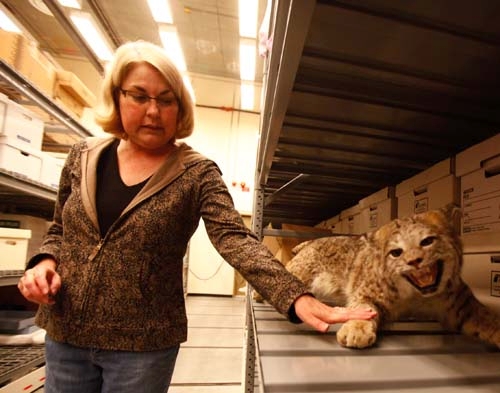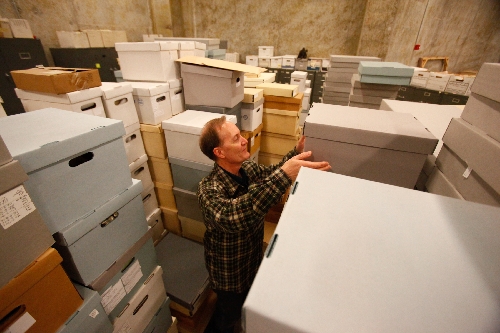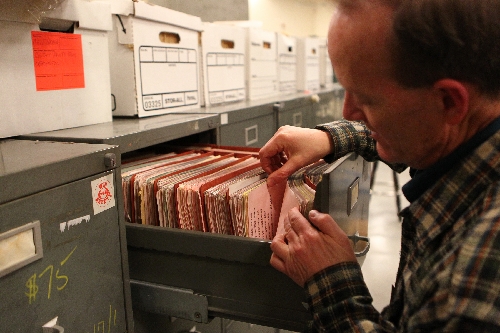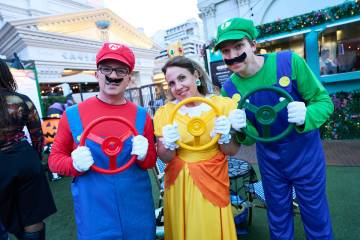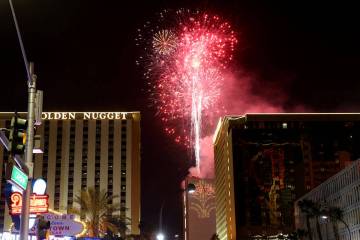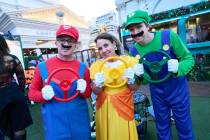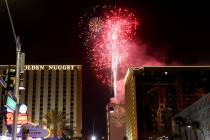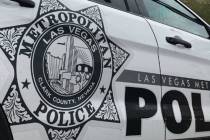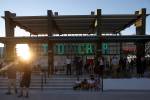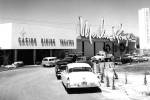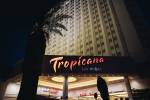Nevada State Museum celebrates treasures of days gone by
Even museum directors get the blues.
Dennis McBride, head honcho at Nevada State Museum, deals with his in an unusual way.
"Sometimes, when things get to be too much, I strap myself in," the deadpan McBride says while sitting on one of his favorite artifacts: the execution chair.
The relic from the now-shuttered Nevada State Prison was used for executions in the 1950s, when the procedure was accomplished by dropping cyanide gas pellets into a bowl of sulfuric acid. Its leather restraints are still attached.
The chair makes an impressively morbid sight; one the public doesn't get to see - for now, anyway.
Plenty of historic treasures are on display at the museum next to the Springs Preserve, at Valley View Boulevard and U.S. Highway 95. But the execution chair and much of the museum's other inventory remains hidden. Like most museums, roughly 80 percent of its stock is in storage, McBride says.
ARTIFACTS OF EVERY DESCRIPTION
Thousands of artifacts rest in three huge, vault-like rooms below the museum itself.
Some are neatly stacked on massive shelves that move at the touch of a button. Others are locked away in countless cabinets. Many more still are waiting in boxes to be unpacked after the museum's big move more than a year ago from the much smaller Lorenzi Park location.
The new $51.5 million, 70,000-square-foot museum opened in October 2011, after a six-year wait caused by construction and funding issues.
The building includes about 13,000 square feet of permanent and temporary exhibit space. The rest is for records, offices and storage.
Down a few flights of stairs, under lock and key, are "artifacts of every description," McBride says. The museum keeps the storage rooms at a temperature in the low 70s, with 54 percent humidity. There's a state-of-the-art fire suppression system.
"We keep everything clean, dry, dark and covered," McBride says. "That's how you preserve organic material."
All of this to protect delicate donated, borrowed or purchased artifacts - that may or may not be used in future exhibits - such as ... the wet wipes.
But these are no ordinary wet wipes. They're emblazoned with the logo of the Mint, a local casino that dates back to the mid-1950s and later became Binion's.
"Who saves those?" McBride says. "We do."
The museum keeps loads of past promotional and other materials - keno sheets, pamphlets, ashtrays, etc. - from local casinos, mementos of Nevada's past.
"You would be amazed at what we turn up," McBride says, selecting a small box at random from a stack of dozens. He opens it carefully and extracts a modern, empty milk carton from a local dairy.
Sali Underwood, the museum's curator of natural history, says staffers probably saved it because there's an advertisement for the museum on the side.
Still, even something as mundane as a milk carton can be historic, McBride says.
"History is right now. Every moment that passes becomes history."
A BUCKET OF BRACHIOPODS
Most of the rarely seen artifacts are more interesting than wet wipes or milk cartons.
One room contains documents, such as old Clark County deeds - "property records from pioneering families," McBride says - and marriage records from the early 1900s to the 1950s.
The names of McBride's parents, married in 1954 at the Little Church of the West, appear there.
The museum stores both microfiche and bound hard copies of local newspapers, including early issues of the Las Vegas Evening Review-Journal, which dropped the "Evening" in 1949.
In a second room, next to a couple of old gaming tables, rests "Big Bertha," an ancient slot machine from a Wendover casino that boasts a "big payout" of $5,000. The machine stands nearly 7 feet tall and is about 6 feet wide.
Nearby, boxes of leather cowboy boots from Helldorado Days past lie next to a stereoviewer from the 1930s through which one can view images of Hoover Dam, at the time known as "Boulder Dam."
There are scripts from decades-old television newscasts, an aged casino coin counter, an old waffle iron. Each of the artifacts' histories is catalogued in a separate index.
The third room stores more of the museum's natural history stock - fossils, dried plants, mounted Nevada butterflies. Scores of local birds from the 1930s and 1940s are stowed here, along with other wildlife preserved by taxidermy.
From a high shelf, a beaver peeks out from beneath a sheet. On another lurks one of Underwood's favorite items - a bobcat with a beautiful coat. A mystery "bucket of brachiopods" - the hard-shelled marine animals' remains, anyway - is around here somewhere.
"They just kind of showed up in 1992," Underwood says.
Costumes from long-closed Vegas shows hang across the way, along with prom dresses from the 1950s and a uniform that once belonged to a girl who danced with the Las Vegas High School Rhythmettes, a group that performed around the country in the 1950s and 1960s.
Staffers carefully stored lots of Native American artifacts - baskets, pottery, tools and rugs, on various shelves and in locked cabinets not far from the execution chair and an old water pipe made of redwood.
Here also is the "bug room," a place for newly acquired artifacts to be debugged and catalogued. Workers first wrap and isolate the items. If that doesn't work, they resort to "a little pesticide," Underwood says.
"Sometimes we freeze things."
McBride calls the route from acquisition to display "a tedious, specific process."
The new building includes plenty of space for interns and volunteers to help out.
"It's wonderful that we can offer that opportunity," McBride says. "It's an educational and cultural resource instead of just a building full of stuff."
HAUNTED?
The museum didn't need any extra room to store its most infamous artifacts.
Nor did it bother packing or transporting them from the old location. Ghosts tend to move themselves.
McBride and Underwood speak matter-of-factly about the supernatural museum inhabitants they believe tagged along to the new building.
"You get a tingling on the back of your neck," McBride says. "You hear voices or whistling. I just say, 'Hello!' "
It's only natural for spirits to stick around, he says.
"These were things that belonged to people who died. Sometimes they still hang around their stuff."
Their presence doesn't bother McBride. Deadpan again, he says, "They are the only friends I have."
Nevada State Museum
■ Hours: 10 a.m. to 4 p.m. Friday through Monday
■ Where: 309 S. Valley View Blvd., at the Las Vegas Springs Preserve
■ Admission: $9.95 for Nevada residents, free for children under 18. (Adult general admission includes access to the Springs Preserve. Children over 5 years old who visit the Springs Preserve must have a ticket, which costs $4.95.)
■ More information: Call 702-486-5205 or visit museums.nevadaculture.org



